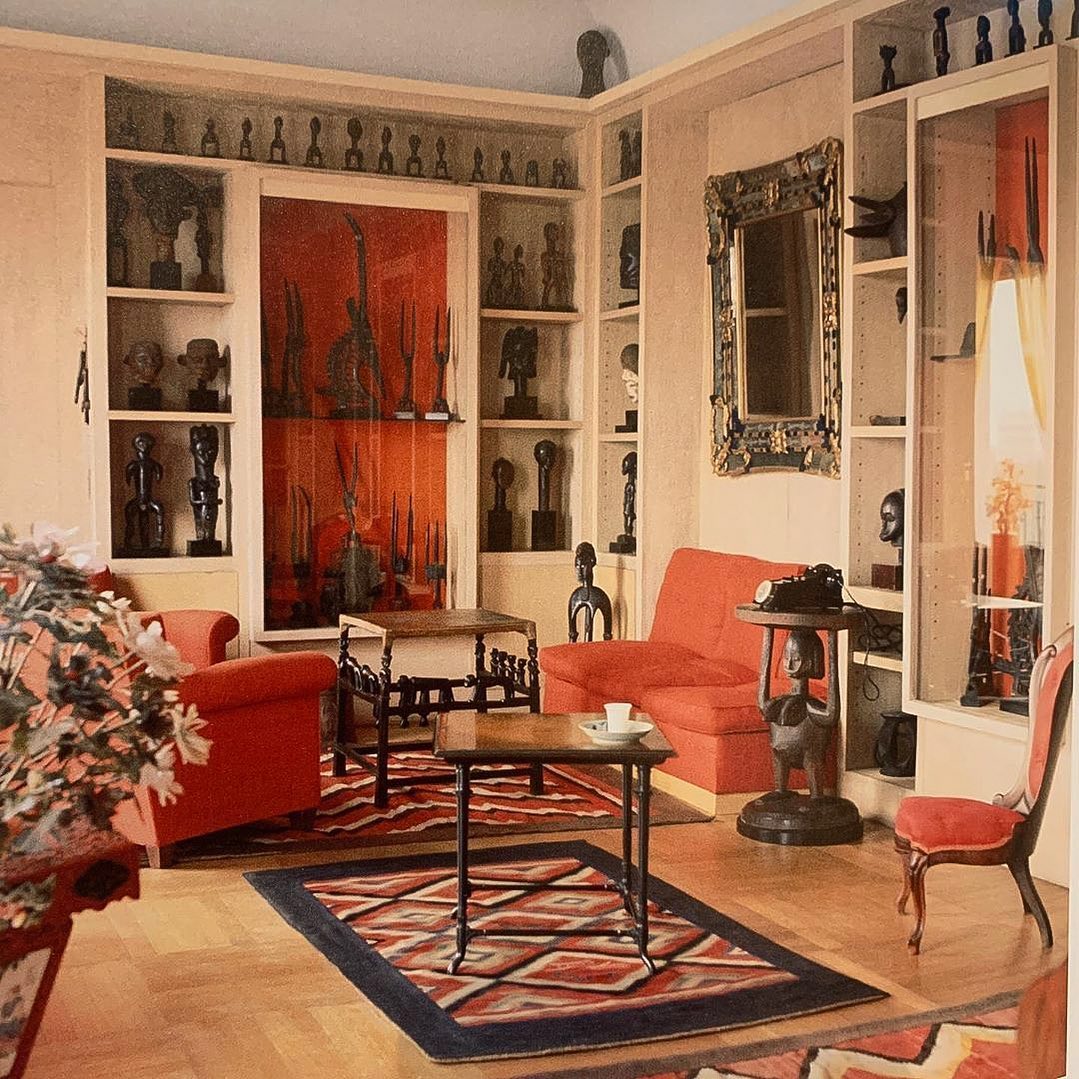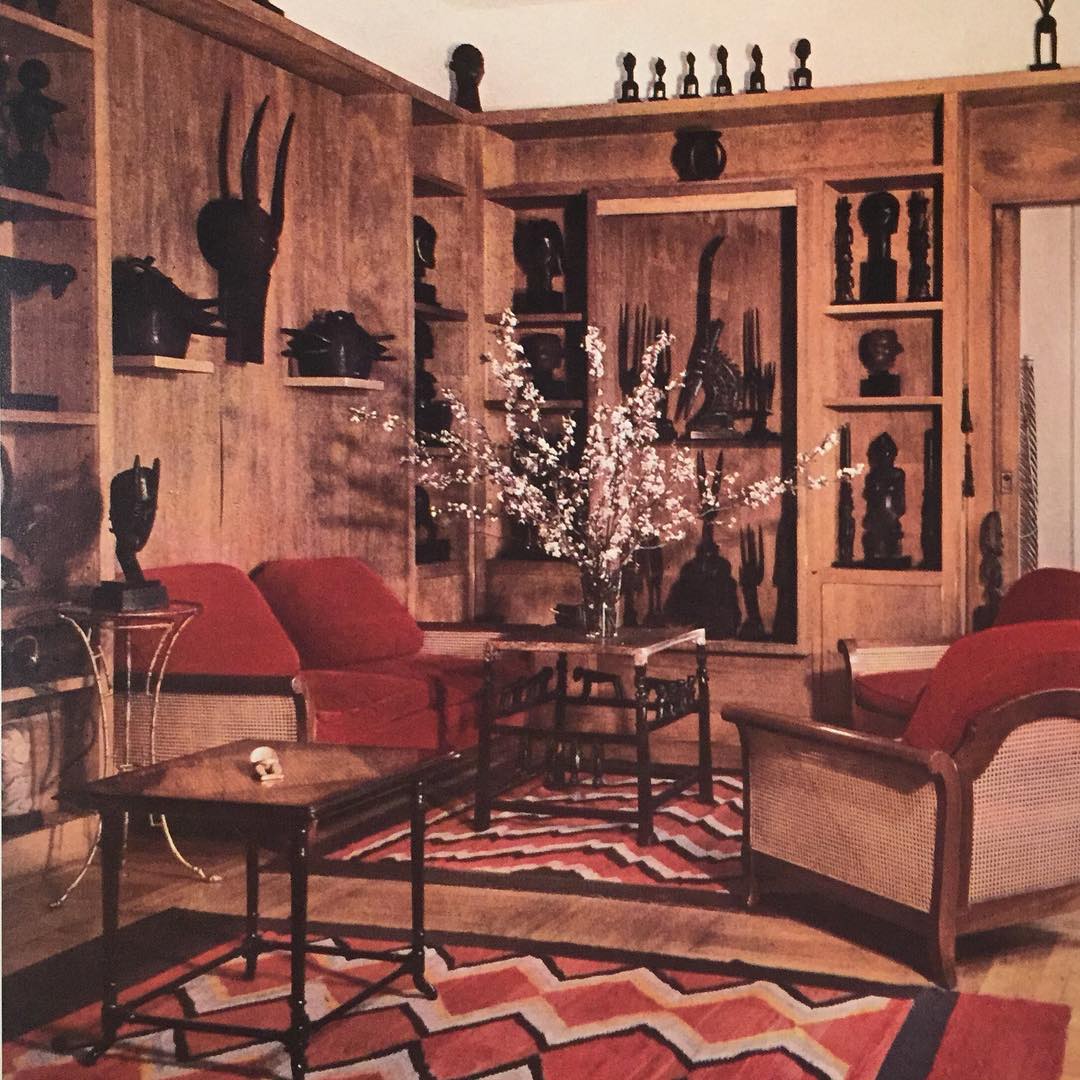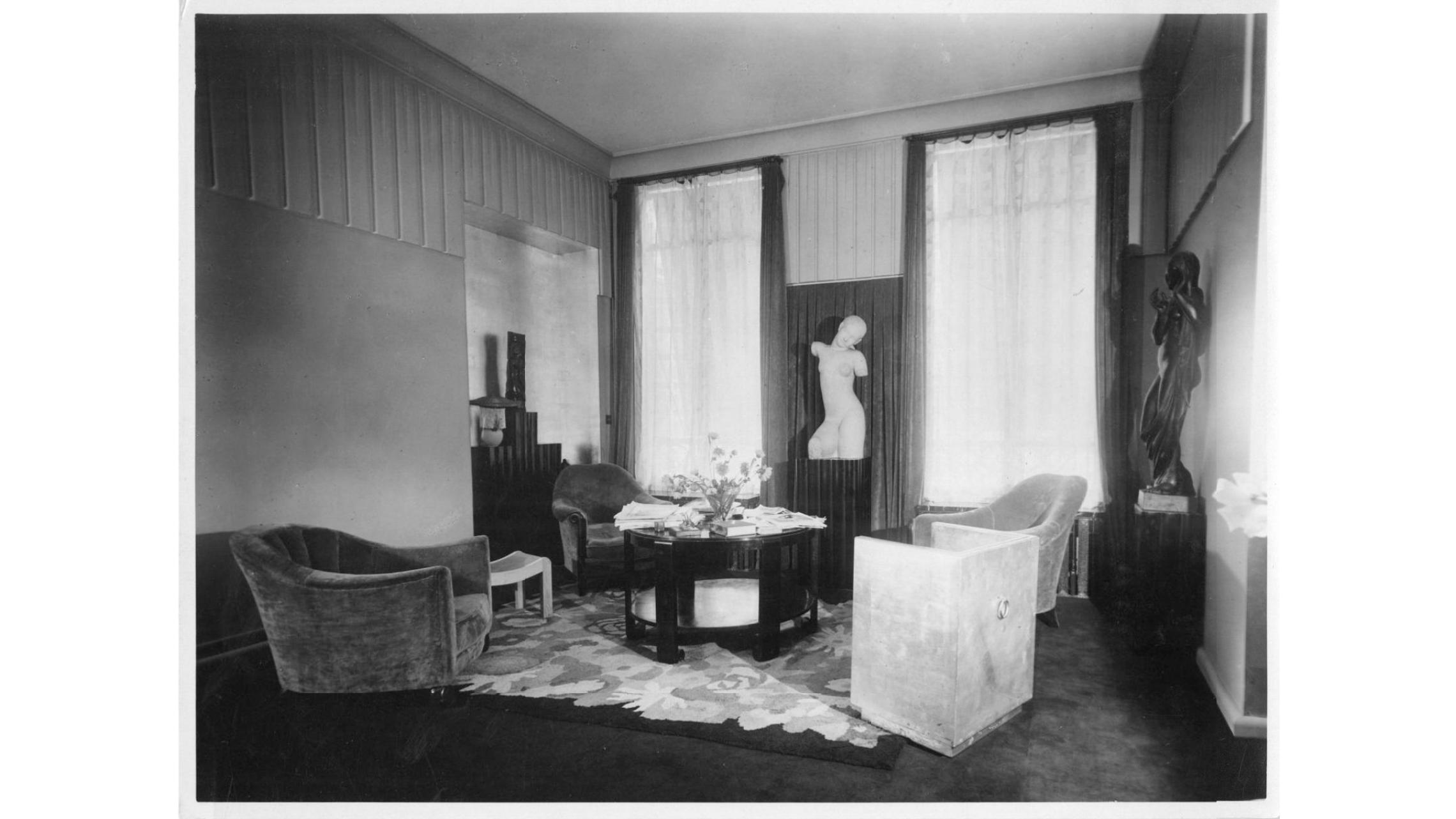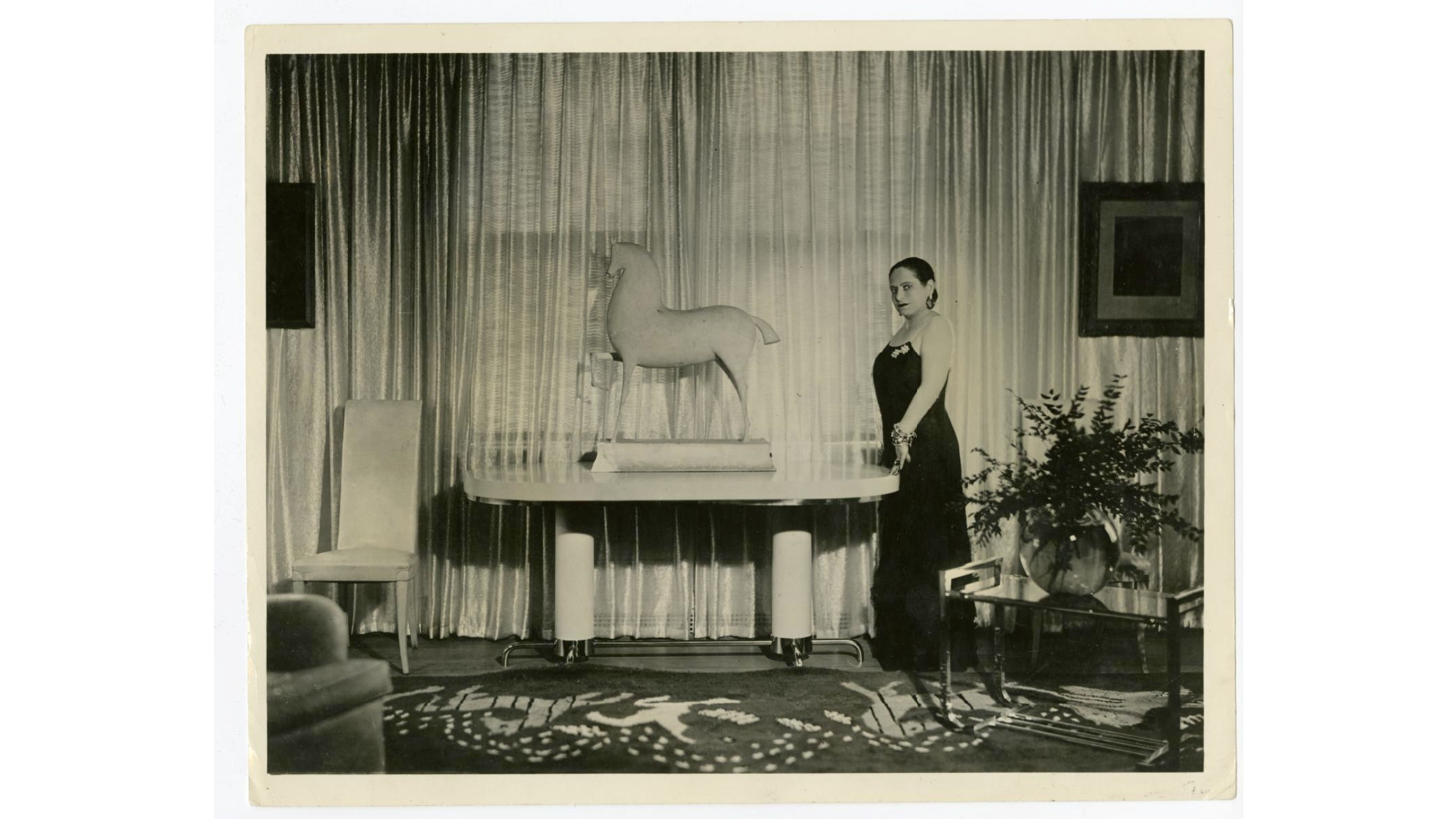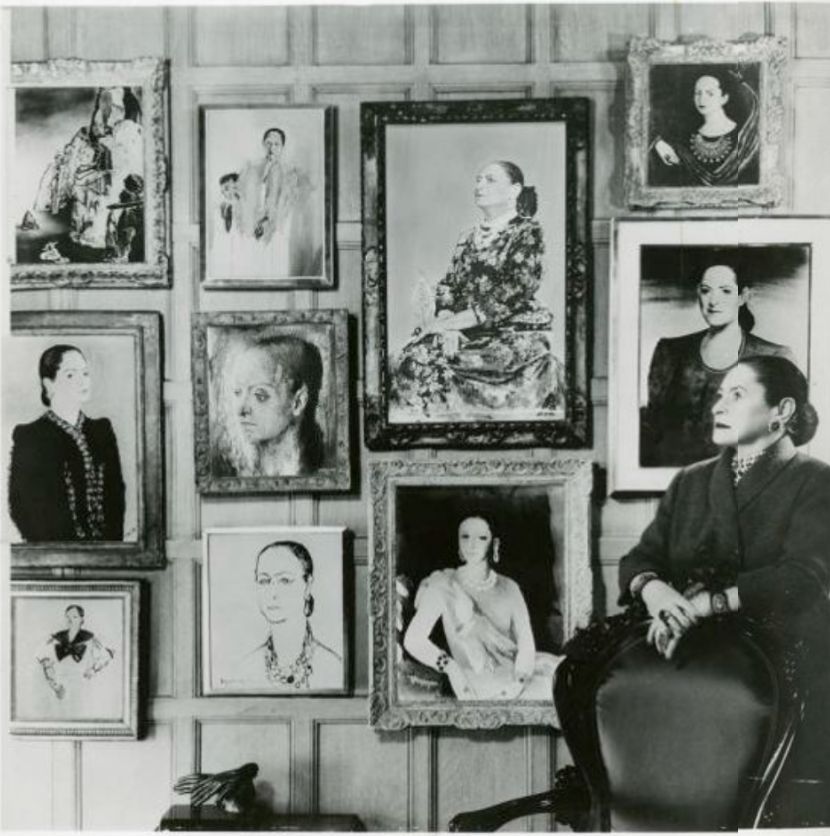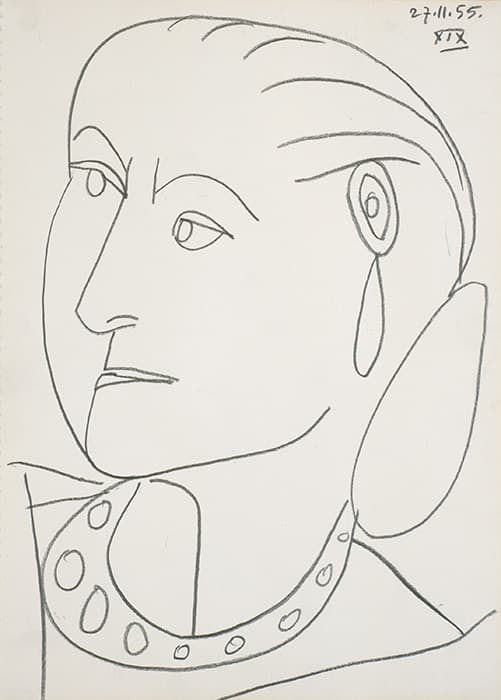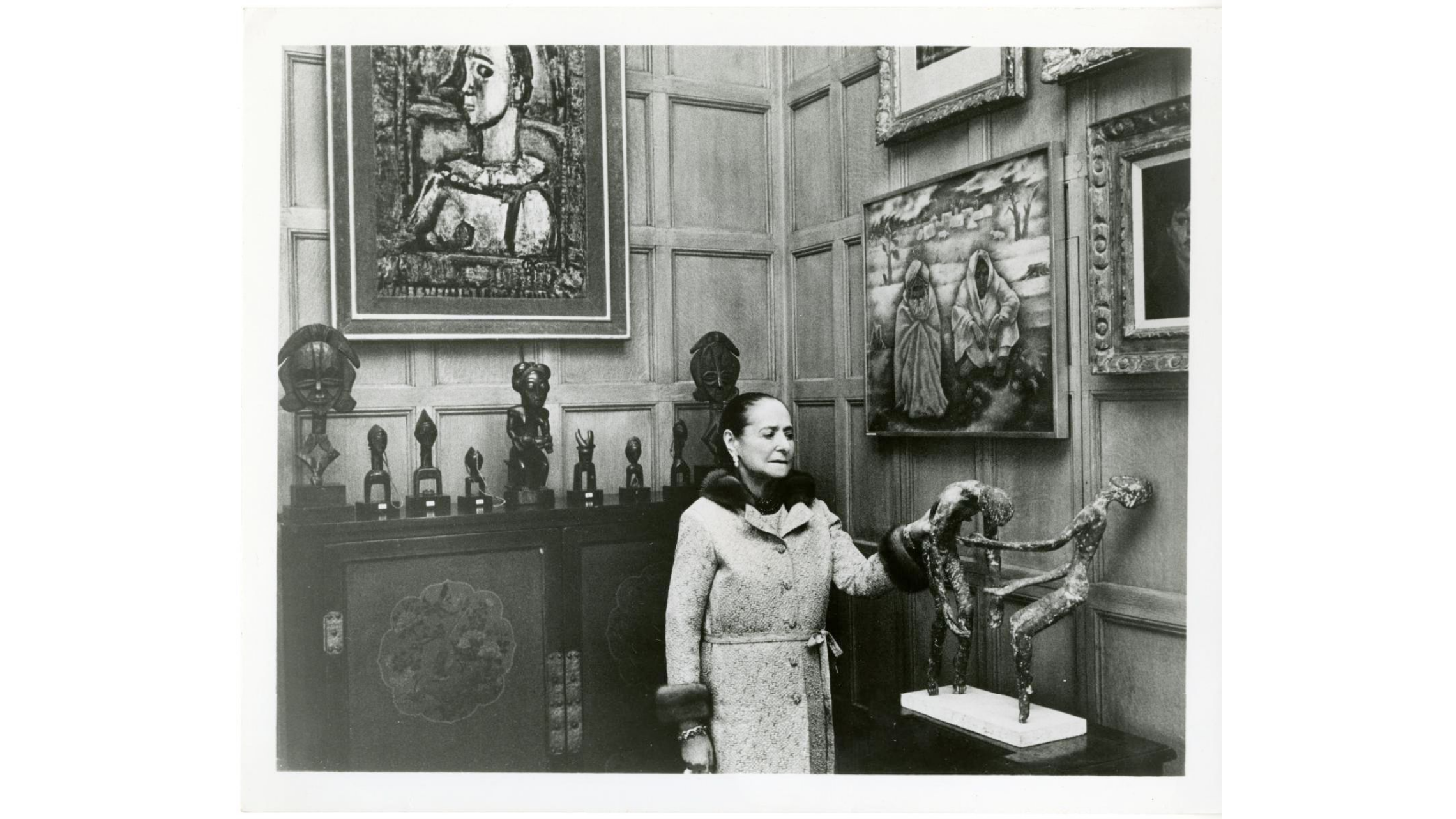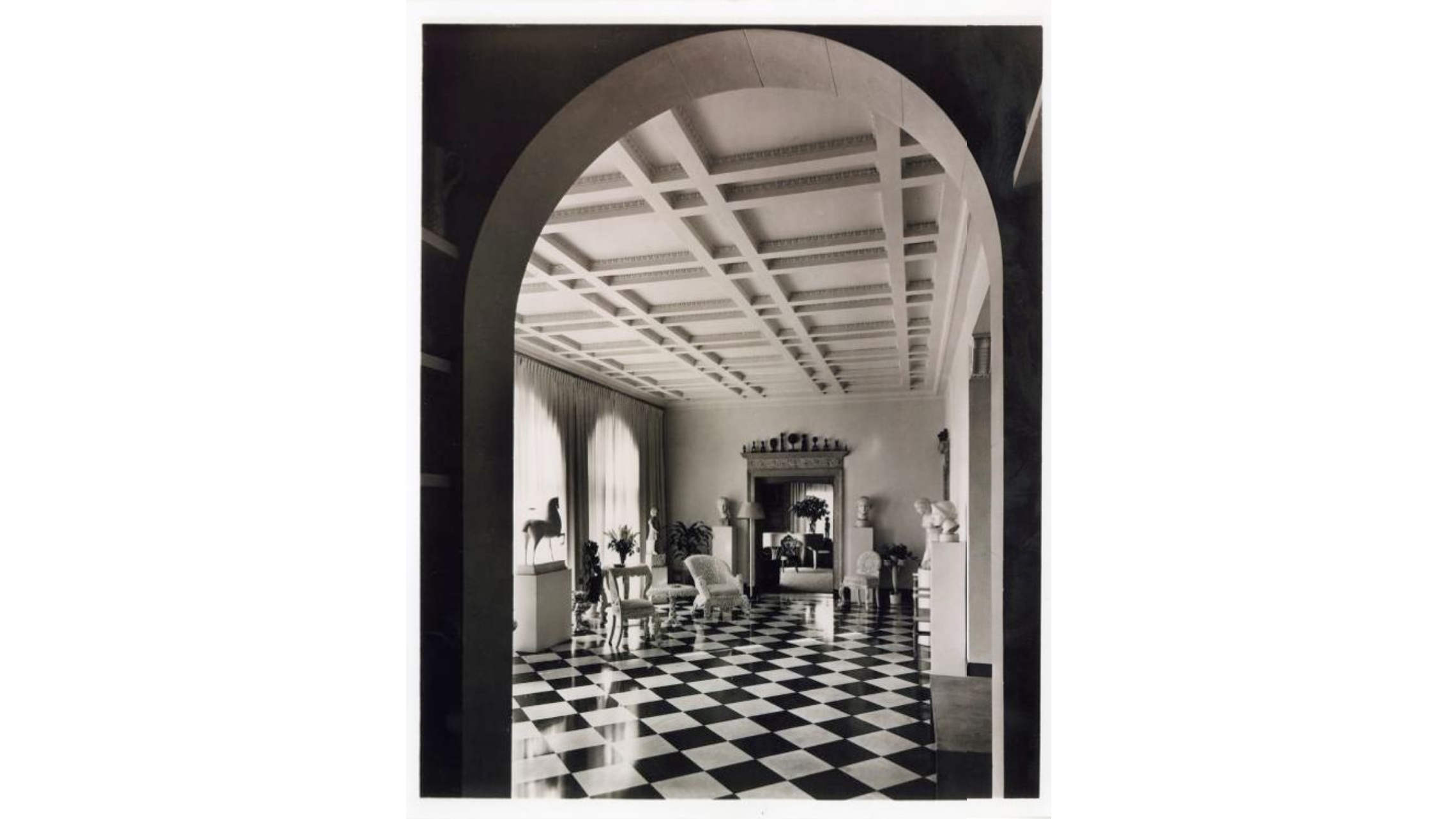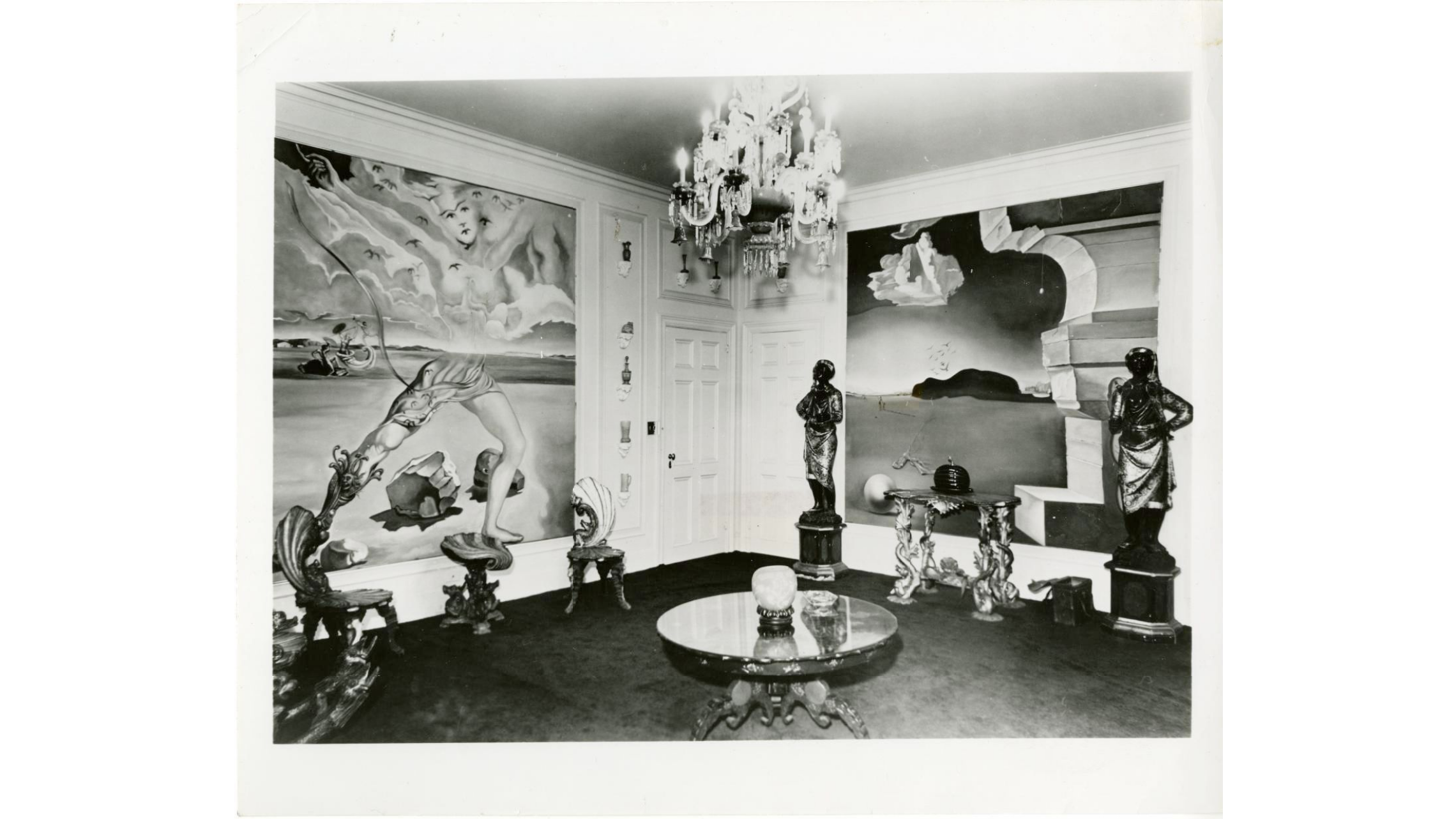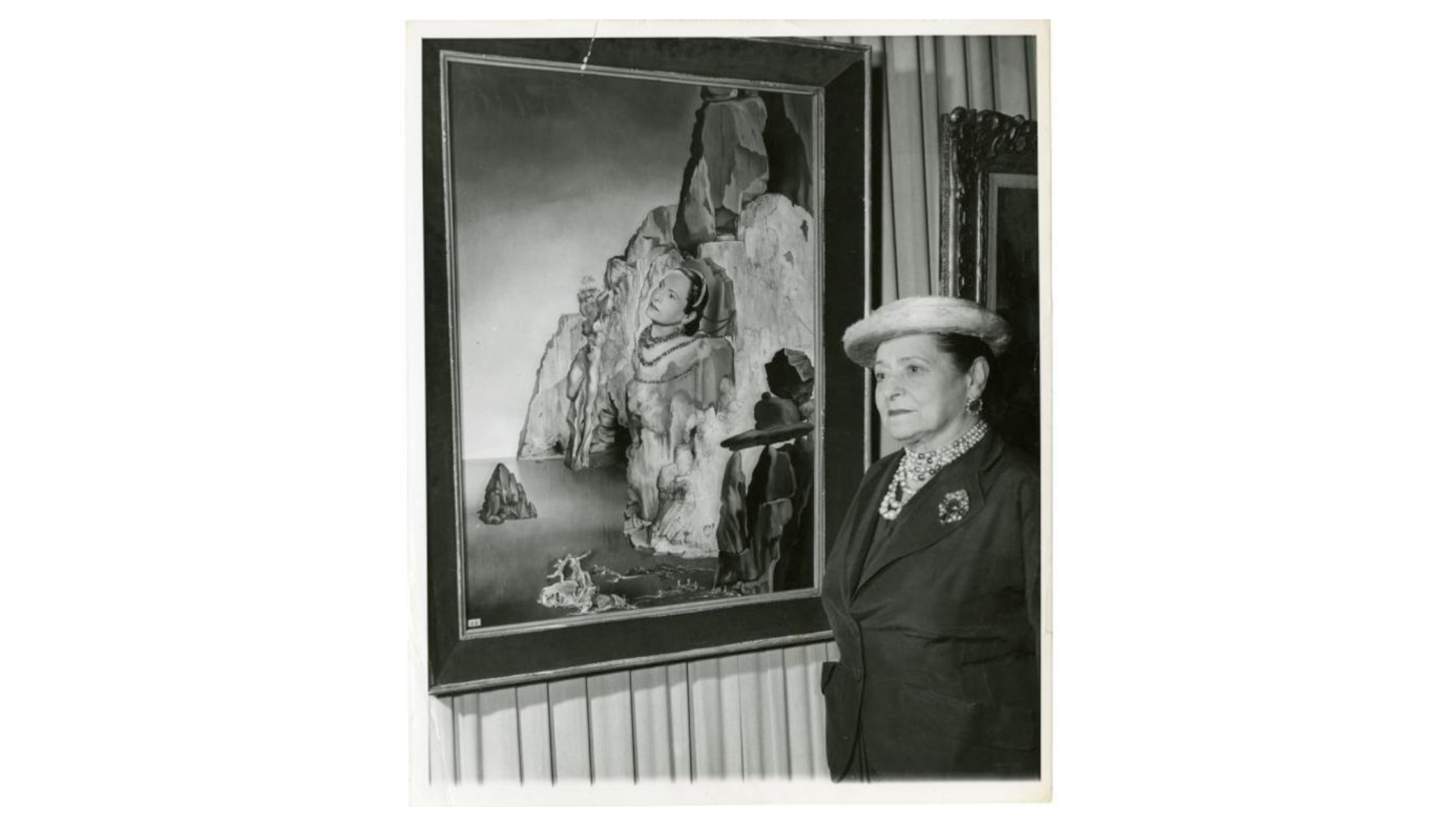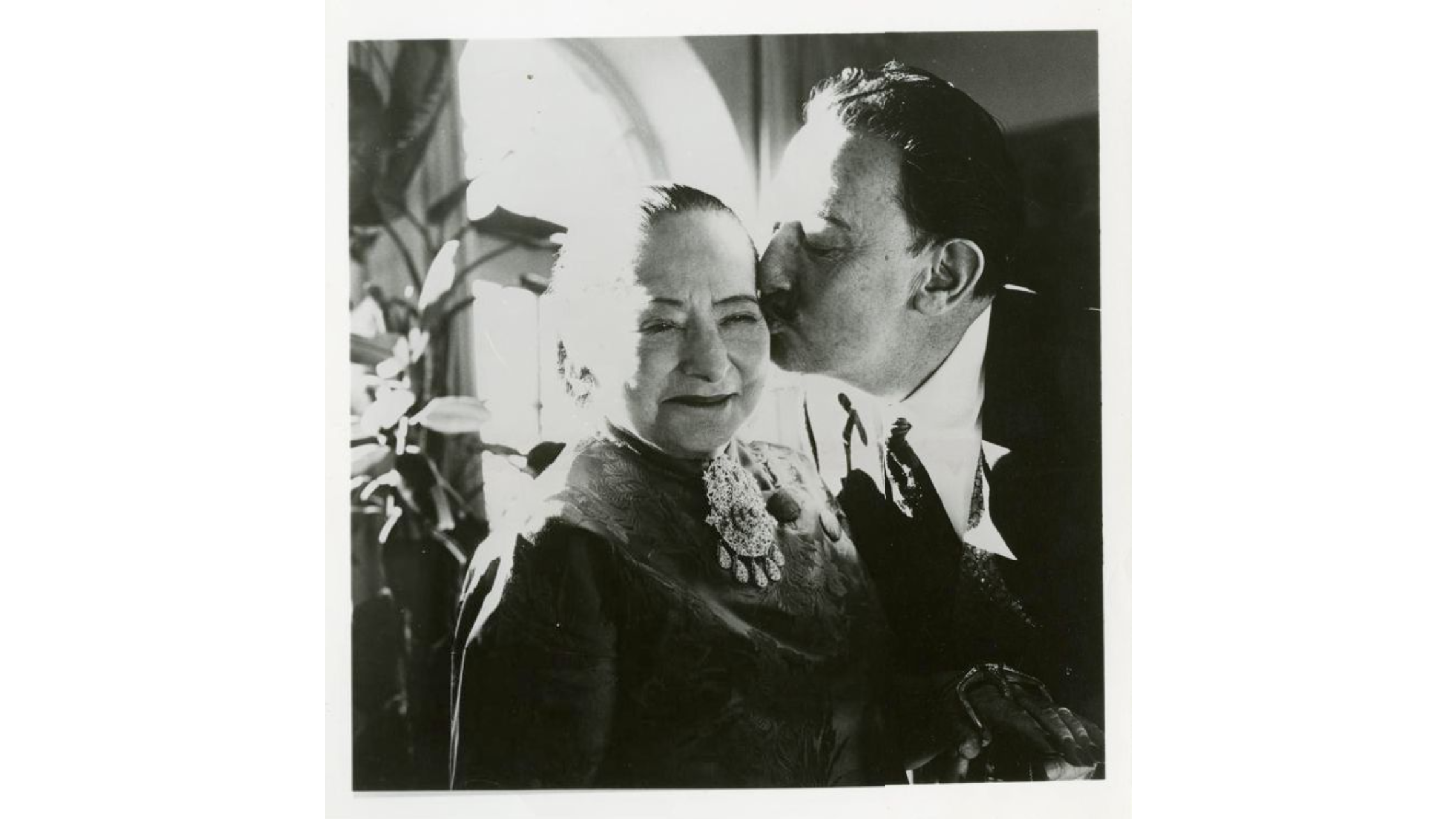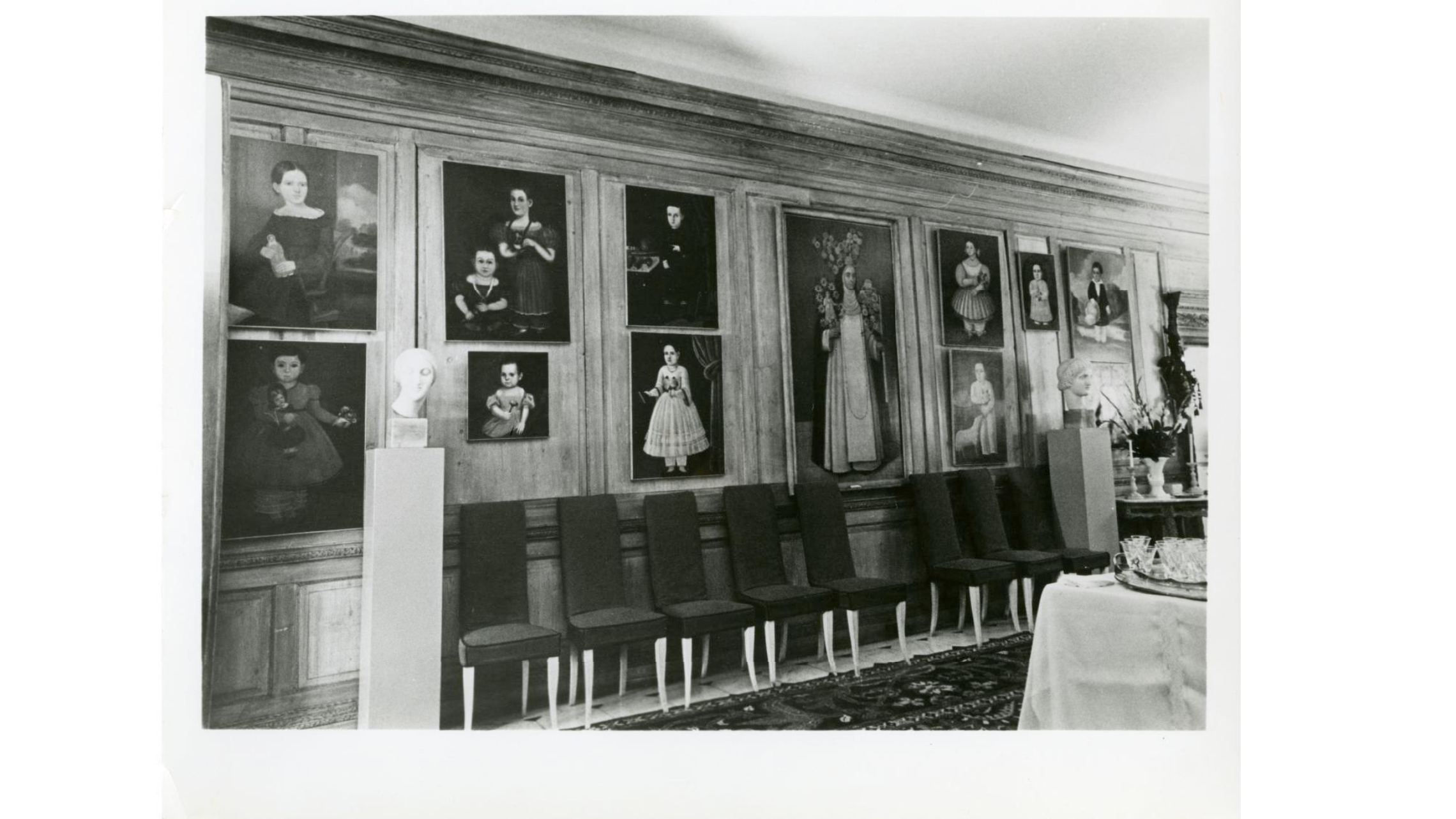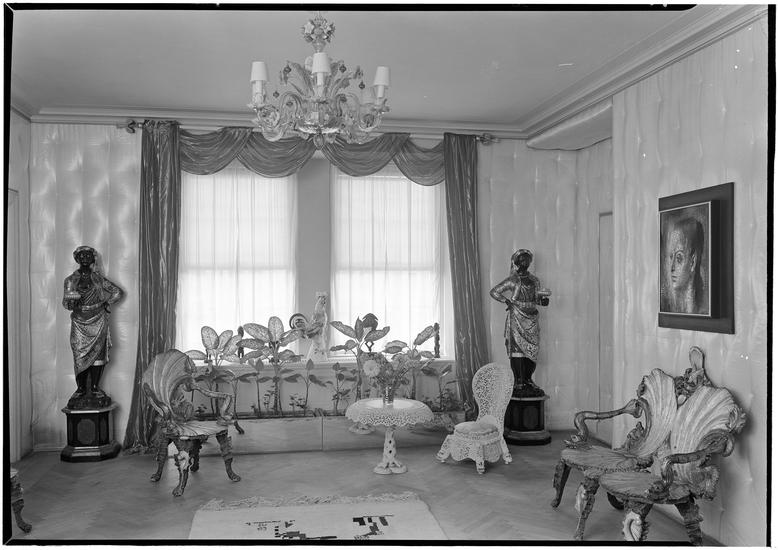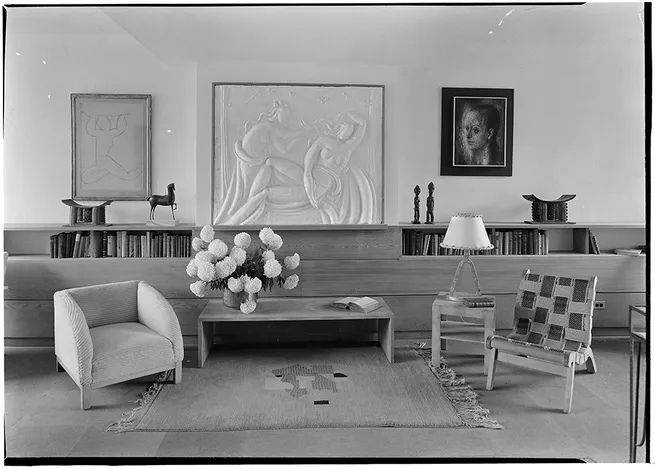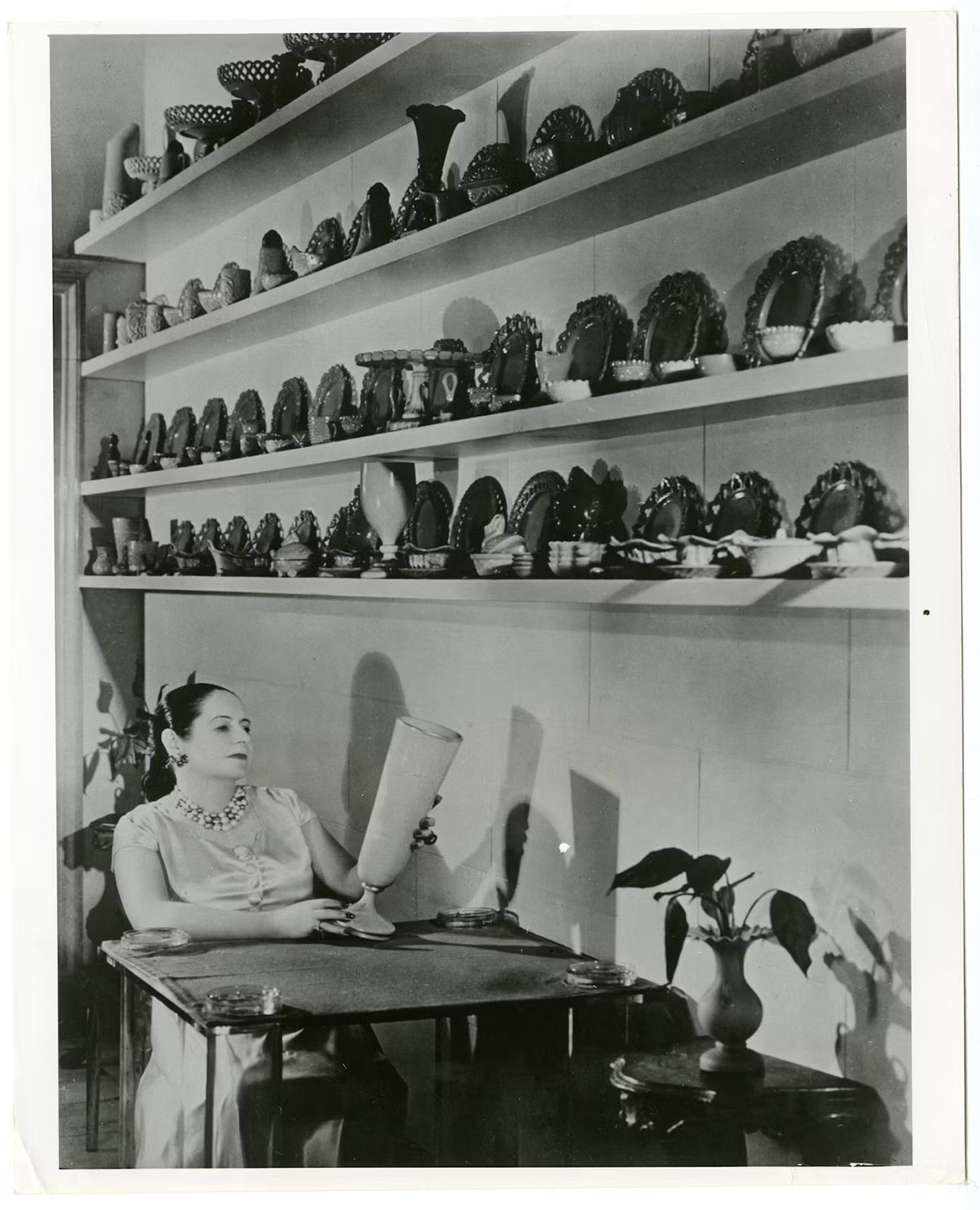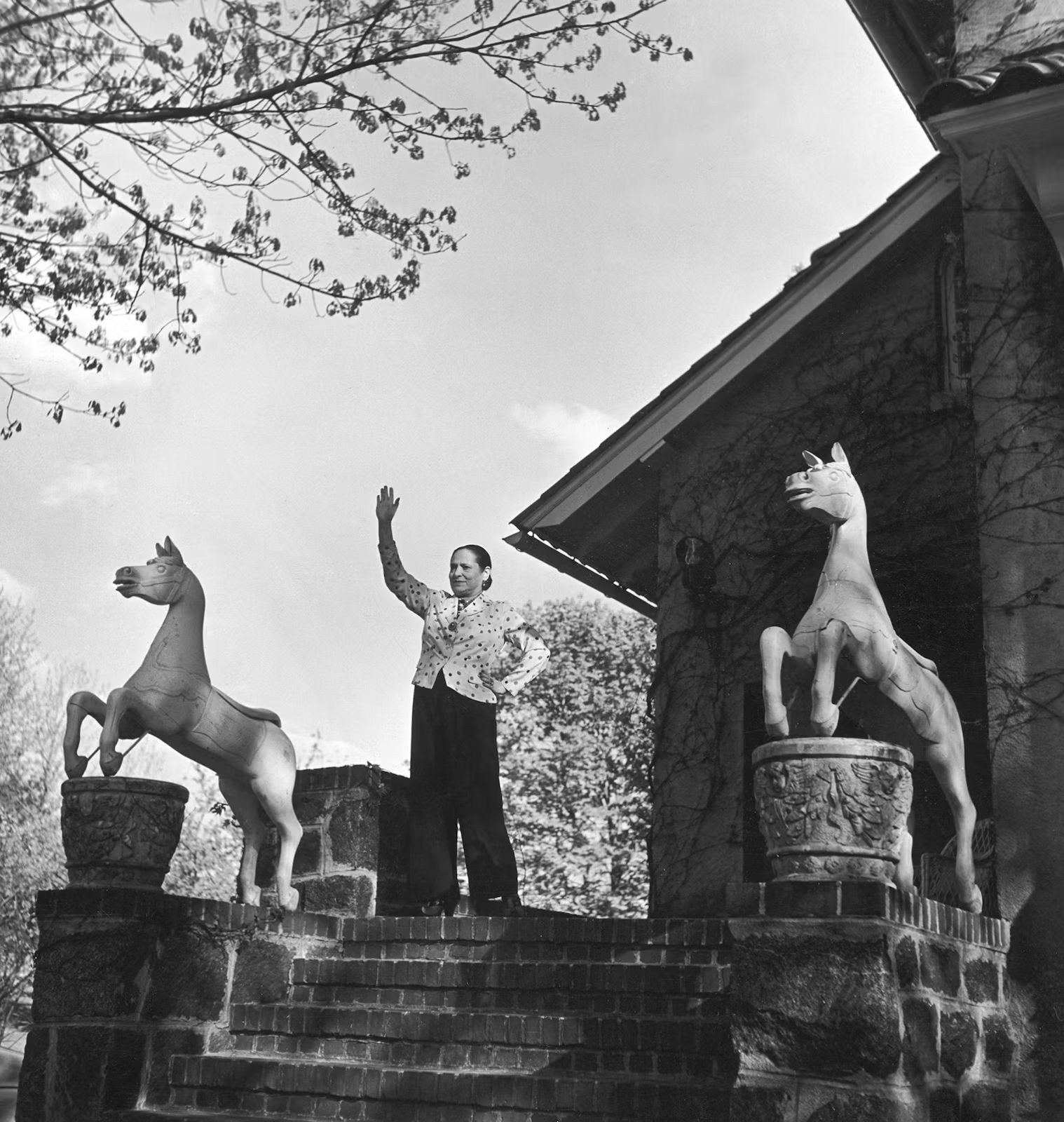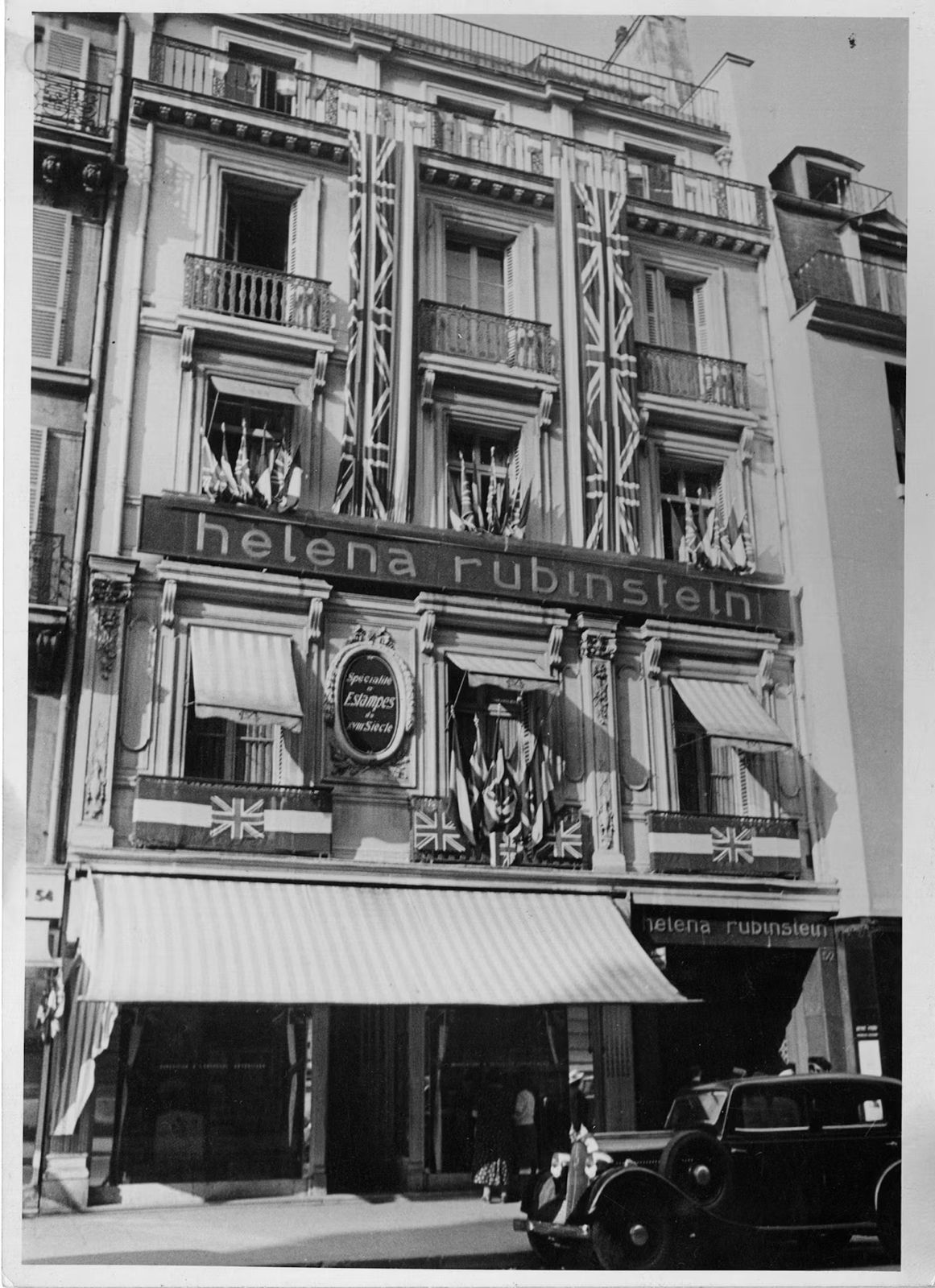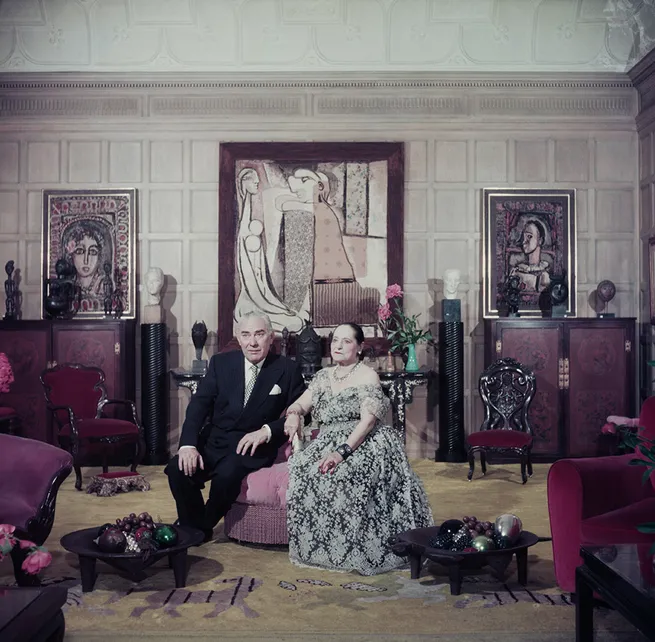The Collector: Helena Rubinstein
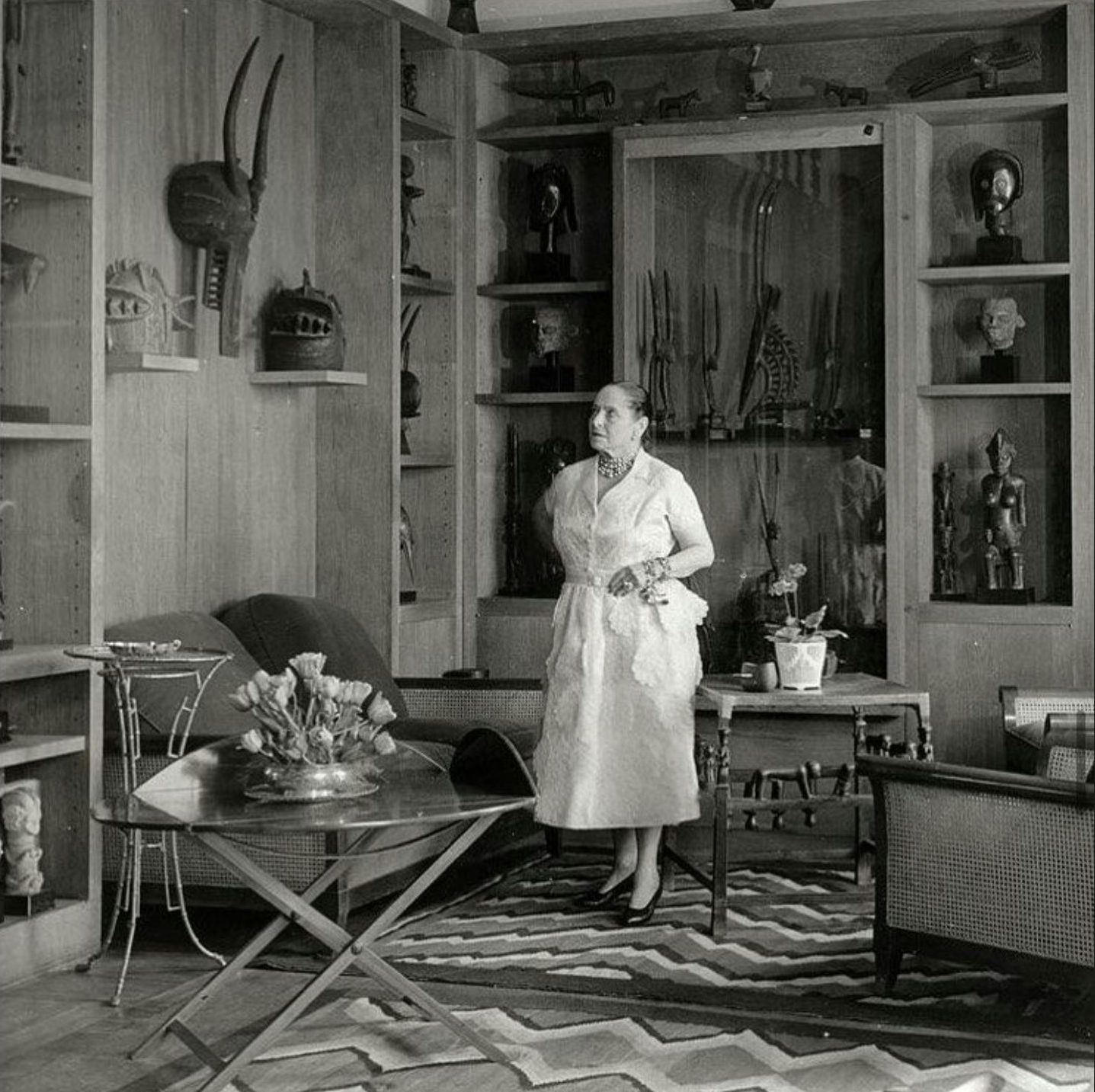
The Collector08.28.2025
The cosmetics tycoon Helena Rubinstein’s love of beauty was reflected in her love of art. “My avid desire to make women beautiful has always blended well with my insatiable thirst for all art forms.” [1]
Born in Kraków, Poland, Rubinstein began collecting art after moving to Paris in 1912. She befriended many avant-garde writers and artists through her second husband, Edward W. Titus, and was an active absorber of culture, visiting museums and artists’ studios. An important guide was her husband’s friend Jacob Epstein, a London-based modern sculptor. Epstein and dealer Charles Ratton advised Rubinstein’s knowledge of African and Oceanic art and she amassed one of the earliest (and largest) European collections. Ratton sold Rubinstein the “Bangwa Queen,” a mid-19th century Cameroonian figure that was famously photographed by Man Ray. [2] From Georges de Miré she acquired key works like a Bambara dance headdress from the Segou region of Mali, a Fang reliquary head from Gabon, and a Kota reliquary from Gabon. [3] In 1935, she lent pieces from her collection to the “African Negro Art” exhibition at The Museum of Modern Art. [4]
In 1914, Following the outbreak of World War I, Rubinstein moved to New York, where she opened her first U.S beauty salon at 8 East 49th Street, which featured sculptures by Elie Nadelman. She expanded her art collection during regular trips back to Europe, purchasing Joan Miró’s “Seated Nude Holding a Flower” (1917) from Barcelona’s Galeries Dalmau; Constantin Brancusi’s “Bird in Space” (1927) directly from the artist; Pablo Picasso’s “Head of a Woman” (1908) and “The Dryad (Nude in a Forest)” (1908) from Albert Loeb; and Henri Matisse’s “View of Collioure” (1907), acquired from fellow collector, friend, and client, Marie Cuttoli. [3]
Rubinstein’s marriage to Titus ended in 1928 and ten years later, she married a Georgian noble, Prince Artchil Gourielli-Tchkonia, thus becoming a Princess. As her beauty empire boomed, Rubinstein continued to collect artworks. Her purchases were driven by instinct and sentimental value rather than market value. “When I bought a picture because I thought I was getting a bargain, it most often turned out to be a mistake,” she once said. “But when I purchased what I knew gave me real inner joy, or because I wanted to encourage an artist whose talent I recognized, I usually chose well.” [1]
She adorned her beauty salons with artworks. Opened In 1937, her salon at 715 Fifth Avenue was filled with paintings by Giorgio de Chirico, sketches by Modigliani, murals by Petar Pallavicini, carpets designed by Miró, and African artworks in windows. She asked artists like Marie Laurenchin, Raoul Dufy, and Dalí to design makeup packaging and her lipstick advertisements were said to be inspired by Man Ray’s “Observatory Time—The Lovers.” [Ibid]
In 1941, when Rubinstein was refused a rental at 625 Park Avenue because she was Jewish, she bought the entire building and moved into the triplex at the top. [5] She filled this apartment with a collection of African and Oceanic art, miniature rooms, Venetian shell grotto furniture, paintings by Picasso, Miró, Modigliani, and de Kooning, sculptures by Nadelman, and more. [6] The following year, she commissioned Dalí to paint a portrait of her, “Portrait of the Princess Arthchild Gourielli Helena Rubinstein” (1943). She also asked the artist to paint the murals “Dawn,” “Heroic Noon,” and “Evening” for a Dalí-themed room. [3]
In 1932, Rubinstein bought the Hôtel Hesselin at 24 quai de Béthune on the Île Saint-Louis, which she had redesigned by the architect Louis Süe. She began living in the apartment in 1937 and filled its three floors with antique furniture, classical Greek sculptures, Venetian mirrors, and African and Oceanic art. The carpets, woven by the Myrbor company, were created from drawings by Jean Lurçat and Picasso. “I’ve got so many paintings that I don’t know where to hang them anymore,” she once declared. [1] Rubinstein amassed so much artwork that drawings by Juan Gris could be found stuffed into an old clothes box and Matisse lithographs rested on top of a pile of sheets. As she once said, “I’m a business woman, I’m used to buying in bulk.” [Ibid]
Rubinstein died in 1965. Rubinstein’s collection, spread across three countries and multiple homes, took over a year to catalogue. “Helena Rubinstein wore a lot of people out during her long life,” Bruce Chatwin wrote, “and she retains that capacity in the grave. We work from 9 till 8 in the evening and we still get nowhere.” [7] A 1966 auction of her estate by Sotheby’s Parke Bernet was a major success. The opening sale brought in around $1,450,000, and Bracusi’s “Bird in Space” reached $140,000 in under seventy-five seconds. [8] The sale of her African and Oceanic works was the first major auction of the sort in the United States. [9] Many of the lots were purchased by dealer Harry A. Franklin, including the 32-inch-tall Bangwa queen for $29,000, then an auction record for African art. In 1990, the figure sold for $3.4 million at Sotheby’s New York. [10]
SOURCES
[1] Fitoussi, Michèle. “Helena Rubinstein The Woman Who Invented Beauty.” Pushkin Press, 2025.
[2] Reif, Rita. “Auctions.” New York Times, February 9, 1990. https://www.nytimes.com/1990/02/09/arts/auctions.html
[3] Boate, Rachel, "Helena Rubinstein," The Modern Art Index Project (August 2018), Leonard A. Lauder Research Center for Modern Art, The Metropolitan Museum of Art. https://doi.org/10.57011/XJSC7593
[4] “African Negro Art,” Edited James Johnson Sweeney, Museum of Modern Art, New York, NY, 1935.
https://www.moma.org/documents/moma_catalogue_2937_300086871.pdf
[5] Netto, David. “Is This Park Avenue Penthouse the Best Apartment in New York?” Town and County, April 28, 2017 https://www.townandcountrymag.com/society/a9229926/625-park-avenue-penthouse/
[6] Ennis, Thomas W.. “Helena Rubinstein's Apartment Is for Rent at $50,000 a Year.” New York Times, February 6, 1966 https://www.nytimes.com/1966/02/06/archives/helena-rubinsteins-apartment-is-for-rent-at-50000-a-year-for-50000.html
[7] Woodhead, Lindy. “War Paint: Helena Rubinstein and Elizabeth Arden: Their Lives, Their Times, Their Rivalry.” Virago, 2004.
[8] Knox, Sanka. “Brancusi's 'Bird' Soars To Record.” New York Times, April 21, 1966
https://www.nytimes.com/1966/04/21/archives/brancusis-bird-soars-to-record-140000-is-paid-by-hahn-gallery-for.html
[9] “Helena Rubinstein’s and Harry A. Franklin’s Shared Passion for African and Oceanic Art.” Sotheby’s, May 3, 2019 https://www.sothebys.com/en/articles/helena-rubinsteins-and-harry-a-franklins-shared-passion-for-african-and-oceanic-art
[10] Muchnic, Suzanne. “$3.4-Million Sculpture Sale Sets Record for African Art.” Los Angeles Times, April 22, 1990 https://www.latimes.com/archives/la-xpm-1990-04-22-mn-392-story.html
Photos via Helena Rubinstein Foundation Archives, Fashion Institute of Technology
Image: Rubinstein in the library of her Paris apartment, 1951
